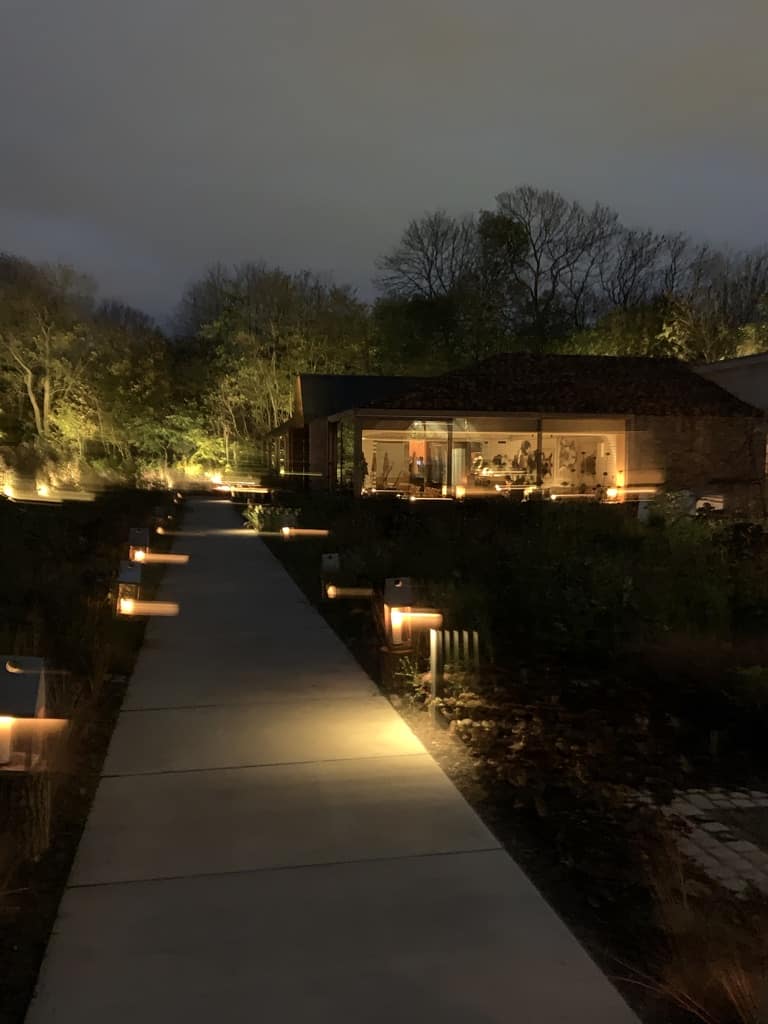
Denmark is a country of 5.6 million people. Its largest city and capital, Copenhagen, boasts a population of 1,333,888. To compare, the GTA (Greater Toronto Area) has a population of 6,390,404 with 2.8 million of these people in Toronto proper. Want another unusual statistic? In Denmark, there are 33 Michelin Stars and 27 star-studded restaurants. What? How does a country the population of Toronto have that many great restaurants?
One of the reasons for such a strong food scene in Copenhagen is NOMA and its chef, René Redzepi. Redzepi is viewed as a culinary hero. He developed a culinary structure that mixed new Nordic cuisine with a commitment to seasonality, fermentation and foraging and an intense focus on ingredients that celebrate the terroir. The name NOMA itself is a portmanteau of Nordisk (Nordic) and Mad (Danish for food).
The World’s 50 Best Restaurants said this about NOMA: “When it opened in 2003, the idea was to challenge the Old World order of gastronomy and celebrate Nordic ingredients. The following year, New Nordic Cuisine was born with a focus on simplicity, freshness and seasonality. The concept of cooking according to season is now so common throughout the world, it’s almost become hackneyed, but back then, 25-year-old chef René Redzepi and restaurateur Claus Meyer were about to change everything.”
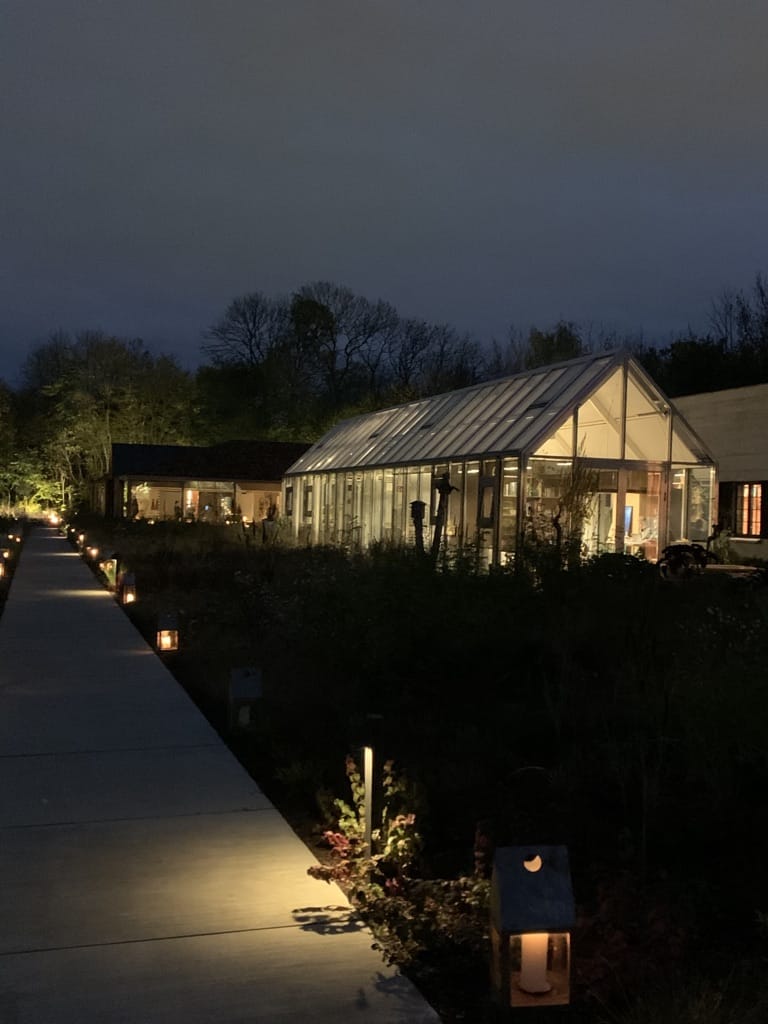
For the years 2010, 2011, 2012 and 2014, NOMA was ranked the World’s #1 restaurant by The World’s 50 Best Restaurants. In 2013, number 2, in 2015, number 3 and, in 2016, it was number 5. It’s a rare restaurant that will close its doors after such incredible success, yet NOMA shut its doors in 2017 and food lovers everywhere shed many a tear. What chef would be crazy enough to say goodbye to such fame and accolades? René Redzepi. He was concerned that the restaurant’s great success was stifling his creativity.
After the original NOMA closed, the restaurant’s location moved from Christianshavn to former military (ammunitions storage) space on Refahalevej Island. The new location is comprised of 11 buildings, which are designed to look like a Danish village. A different approach, dubbed NOMA 2.0, was revealed to the world in February 2018.
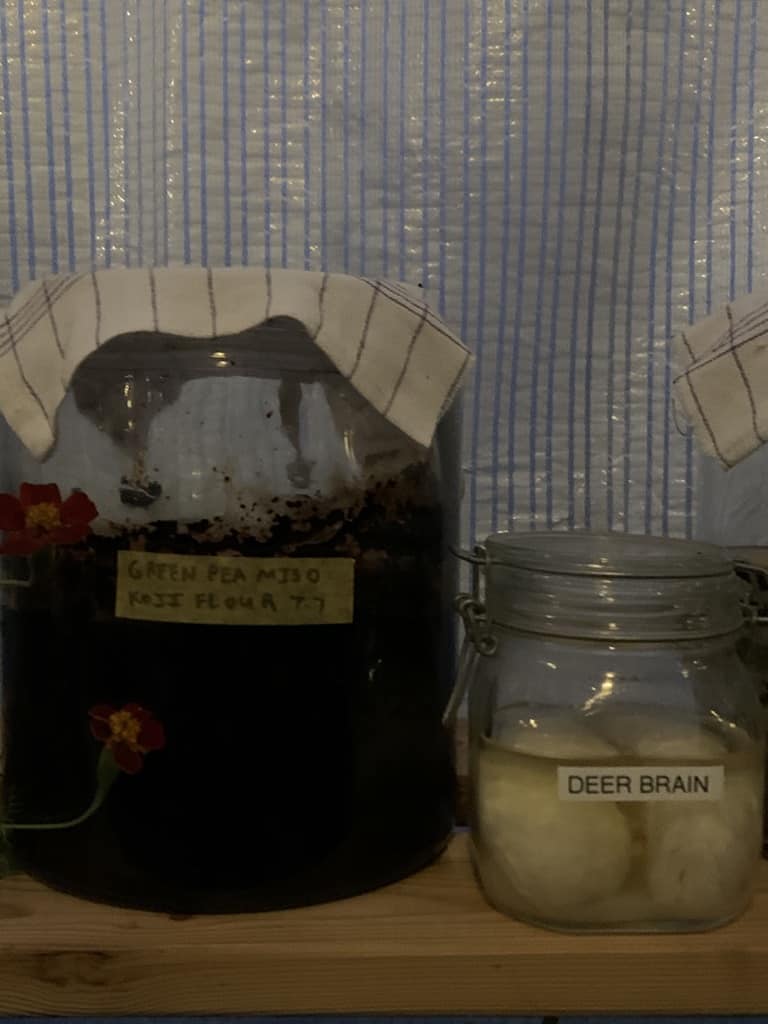
This must have been a bit of a gamble, but as Chef Redzepi put it: “With NOMA 2.0, we dare again to fail”. How did the critics respond to this new venture? Two Michelin stars and NOMA 2.0 entered the World’s 50 Best Restaurants list in the #2 spot.
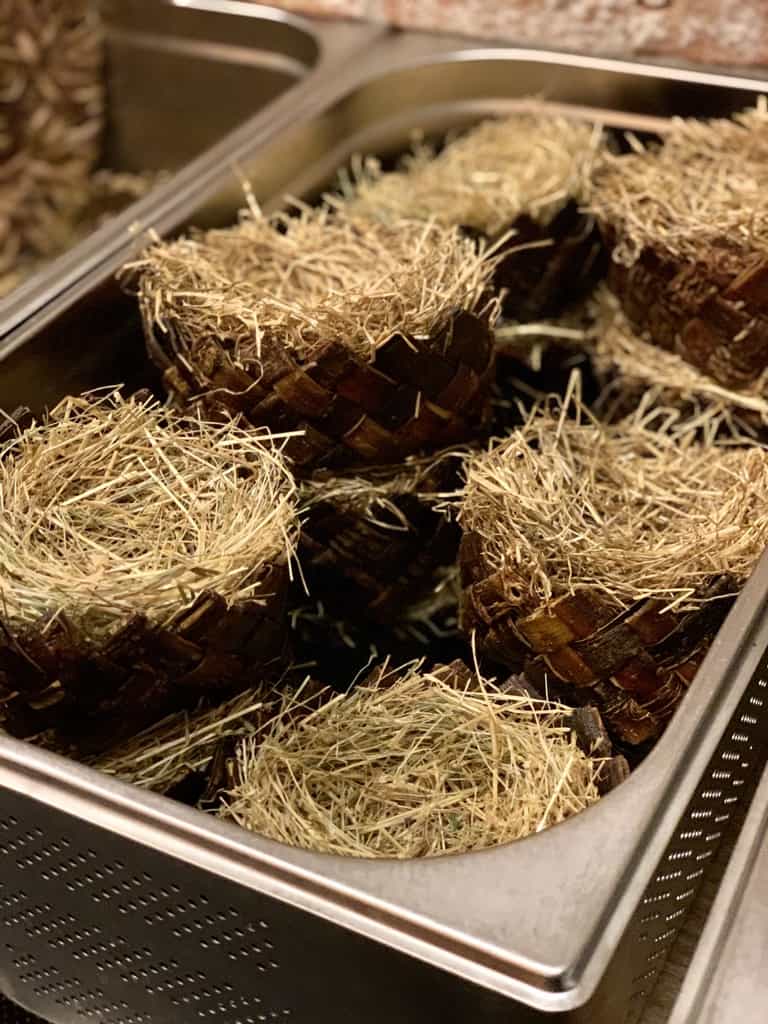
The focus of the food is local and seasonal. There are three distinct dining seasons: Seafood (January to June); Vegetables (July to September) and Game and Forest (October to December). You can probably guess that we did not book Seafood Season, but instead were fortunate enough to get a table for Game and Forest Season, which is described by the restaurant as follows:
“This is the only period of the year when meat will play a starring role at noma, and we will serve everything we can get our hands on: a teal for 2, a goose for 4, leg of moose, reindeer tongue, and wild duck (for those of you following us on Instagram, we will spare our friendly duck neighbours). The Game and Forest Season menu will also pay homage to everything that grows in the forest: berries, mushrooms, nuts and all of the wild plants. It’s of course also the harvest season, so truly one of the most bountiful moments of the year. This season will be a celebration of autumnal abundance.”
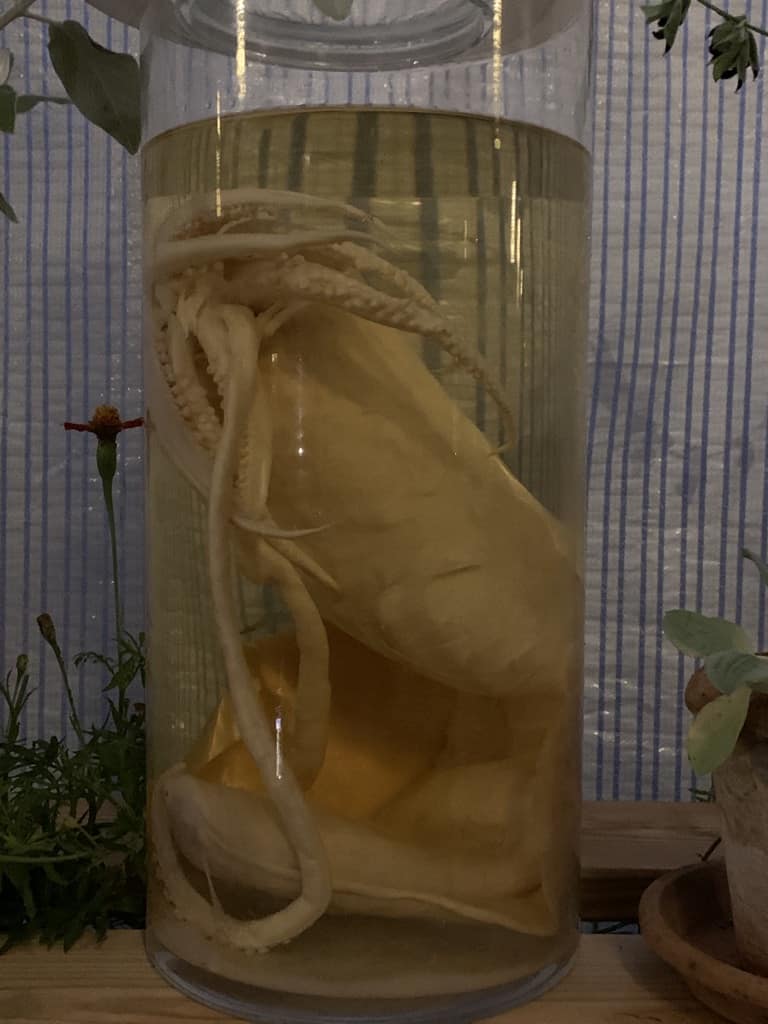
Your dining experience starts upon entry. You are met at the door, well actually the car drop-off area, by Ali Sonko, who started as a dishwasher at the restaurant 15 years ago. Ali is a Gambian immigrant who has worked his way up to owning 10% of the restaurant. He asks you for your name and checks his list (insert mild heart attack as he didn’t find my name right away and I had a panic attack that we had arrived on the wrong day). Once you get the okay, you are escorted into a greenhouse that looks like a mad scientist has been conducting experiments (not far from the truth). It is filled with mysterious objects in glass jars and plants growing everywhere.
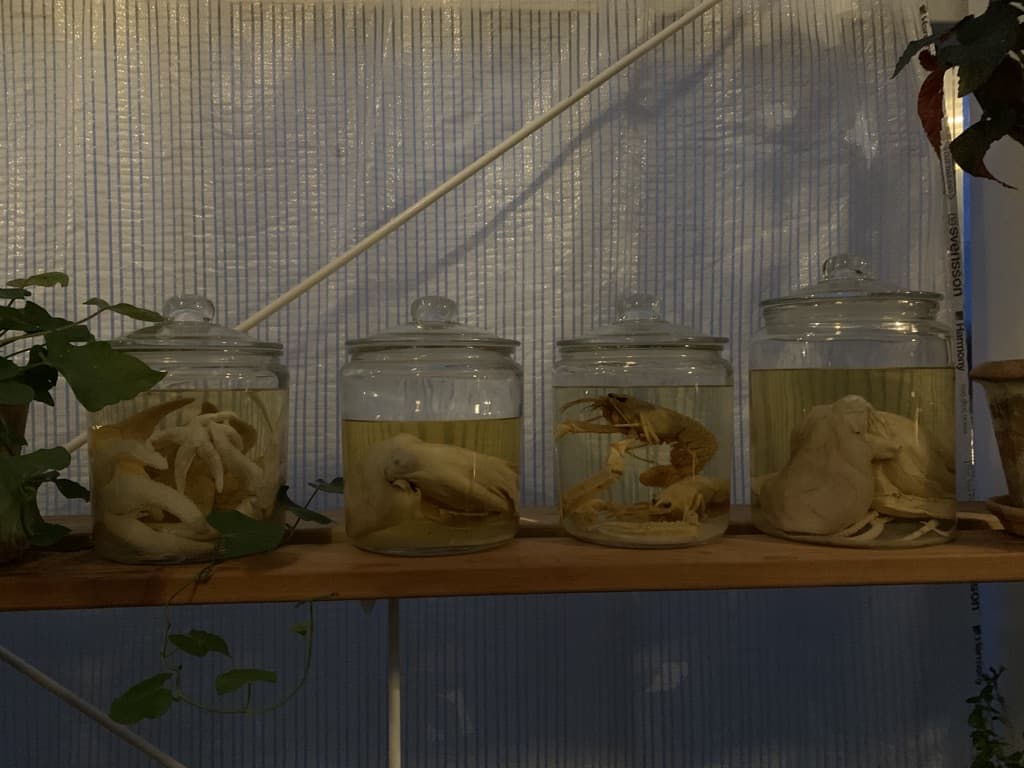
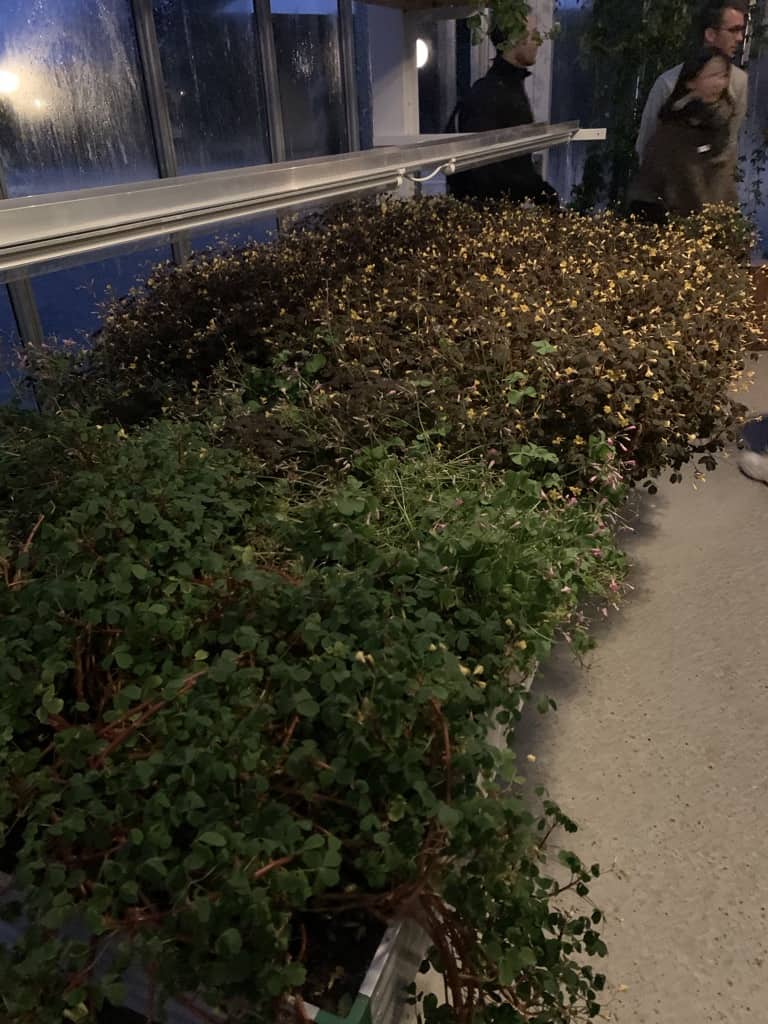
We were given a cup of tea and asked to wait.
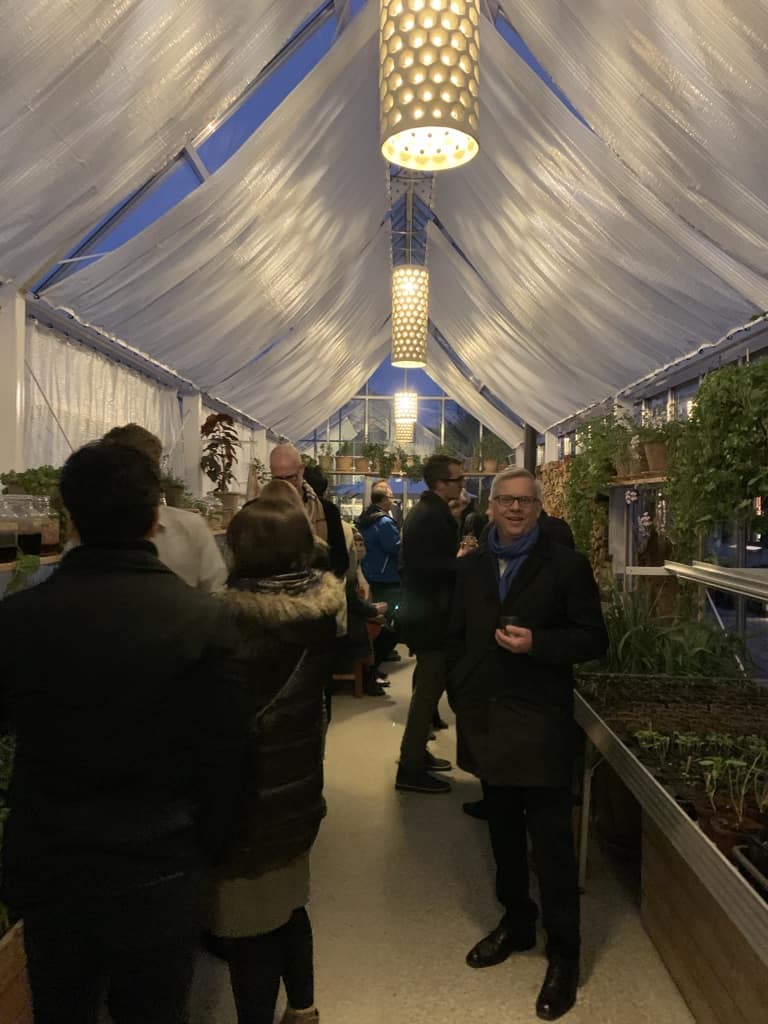
Patrons then took turns entering by table. We had a shared table, so they put together our group of eight and instructed us to walk down the path to the end, and then turn right.

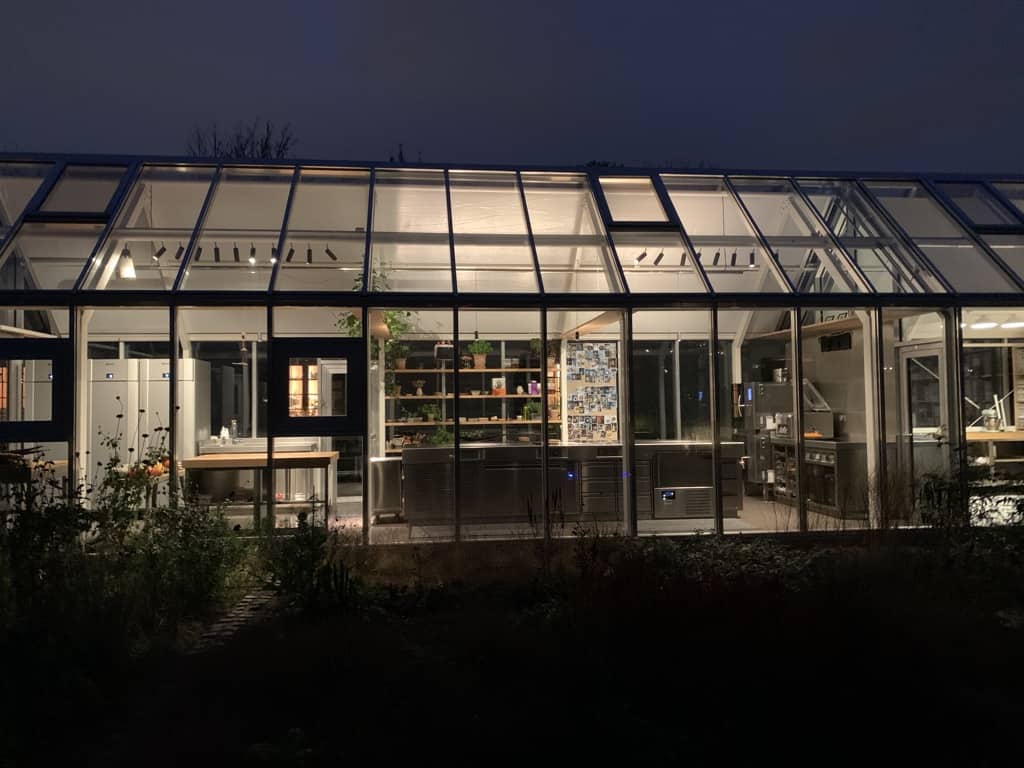
We walked past another greenhouse that I think doubles as a test kitchen before we reached the door of antlers.
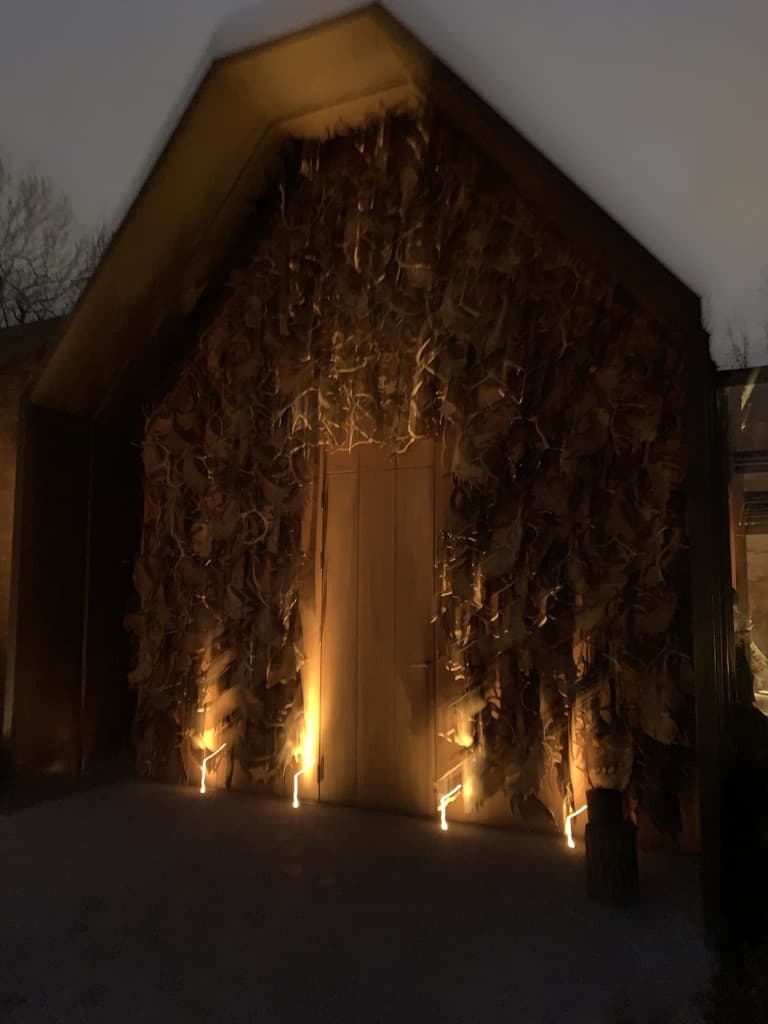
The door opened and we were greeted by a group of staff – one member for each person – who took our coats. There are no tags or notes, but not only do they return the right coat to the right person at the end of the evening, but the woman who returned my coat even remembered what I said when I handed my coat in (“it’s ugly but it’s waterproof”). Waiters and kitchen staff greeted us as we entered the large open room.
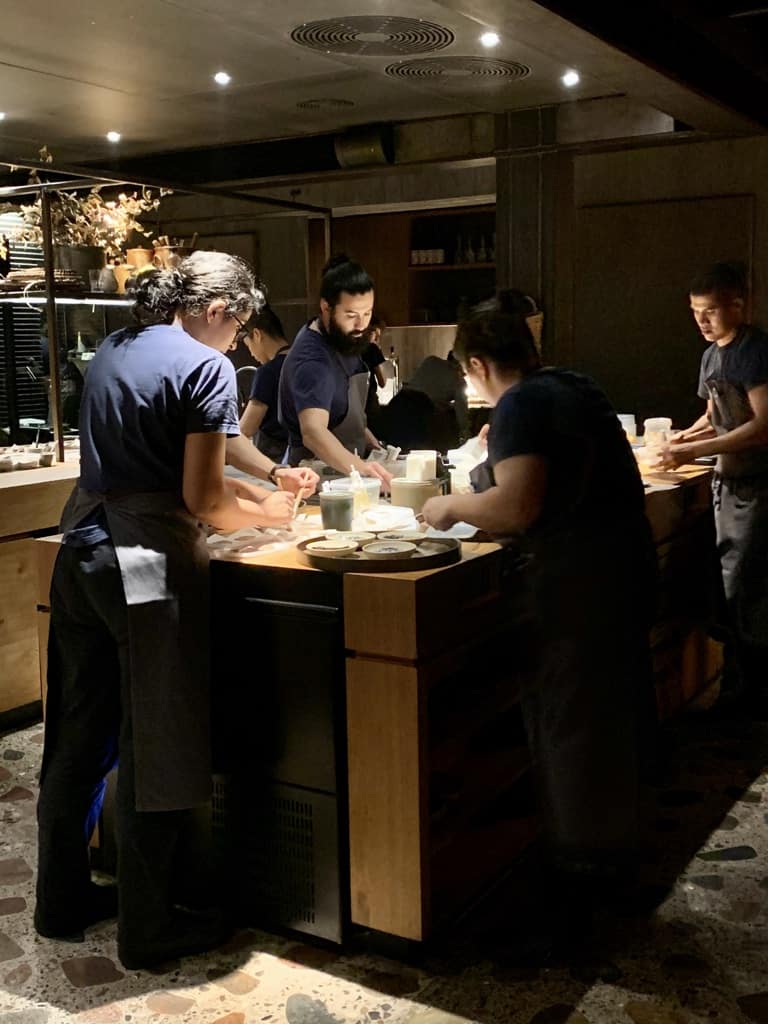
Let the evening begin!
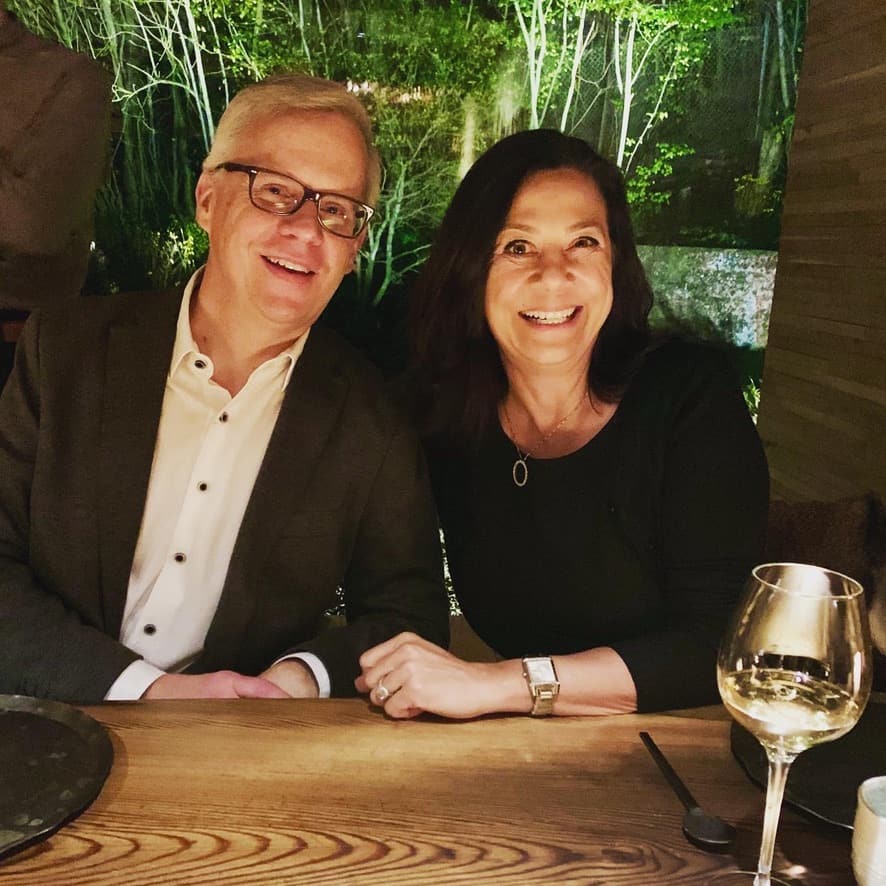
There is a set menu, which looked like this:
- Apple salad – an entire apple is presented, which opens to reveal small apple balls and gummy like insects.
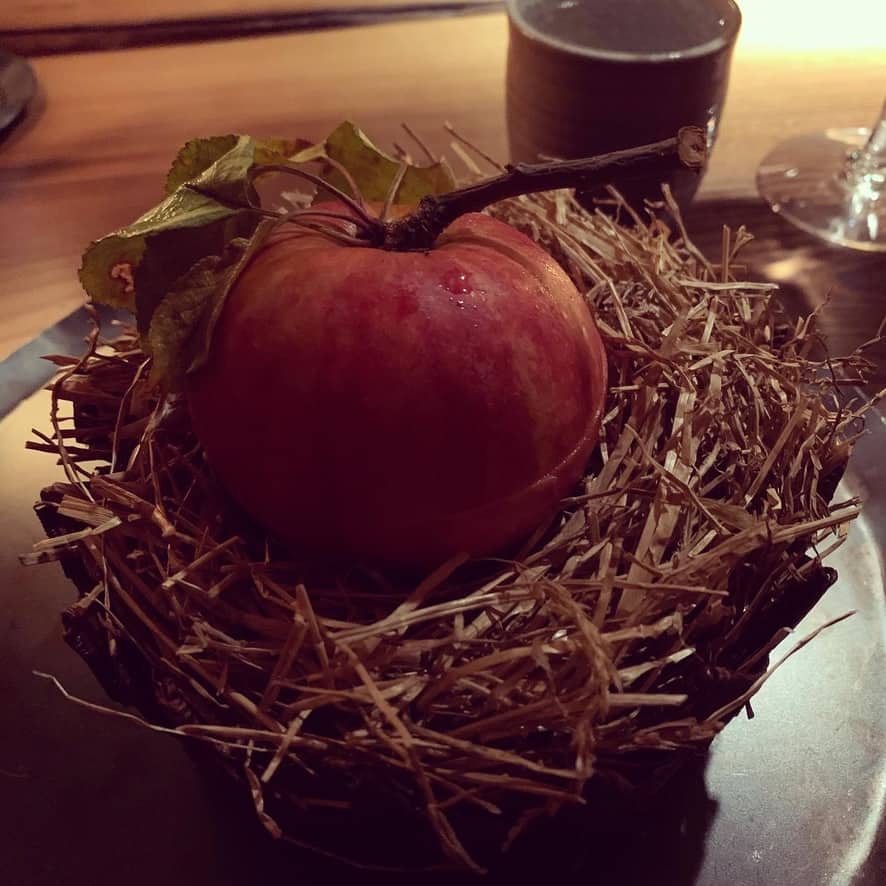
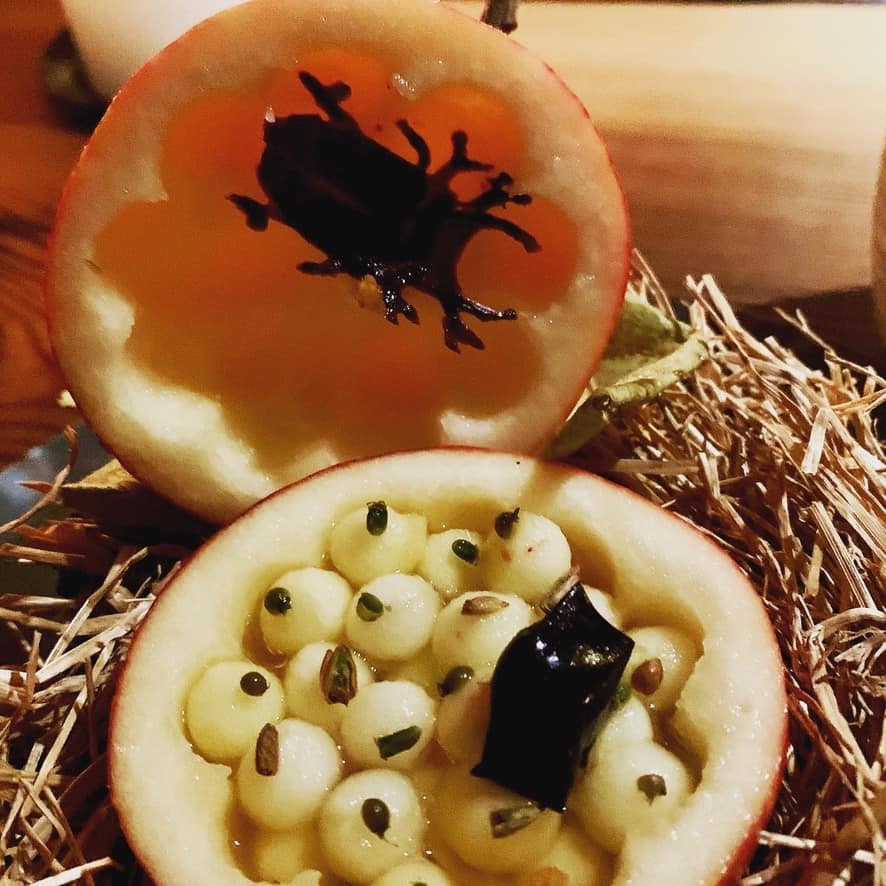
- Reindeer Offal – eaten in this order, clockwise from 6:00 (bottom centre) – sweetbread, tongue, mushroom, marrow, currents, candied pinecone. Under the moss (which you were instructed NOT to eat) was a broth, and between each bite, you had to tip the bowl to your face to sip. Doing this allowed you to get the scent of the moss during your sip.
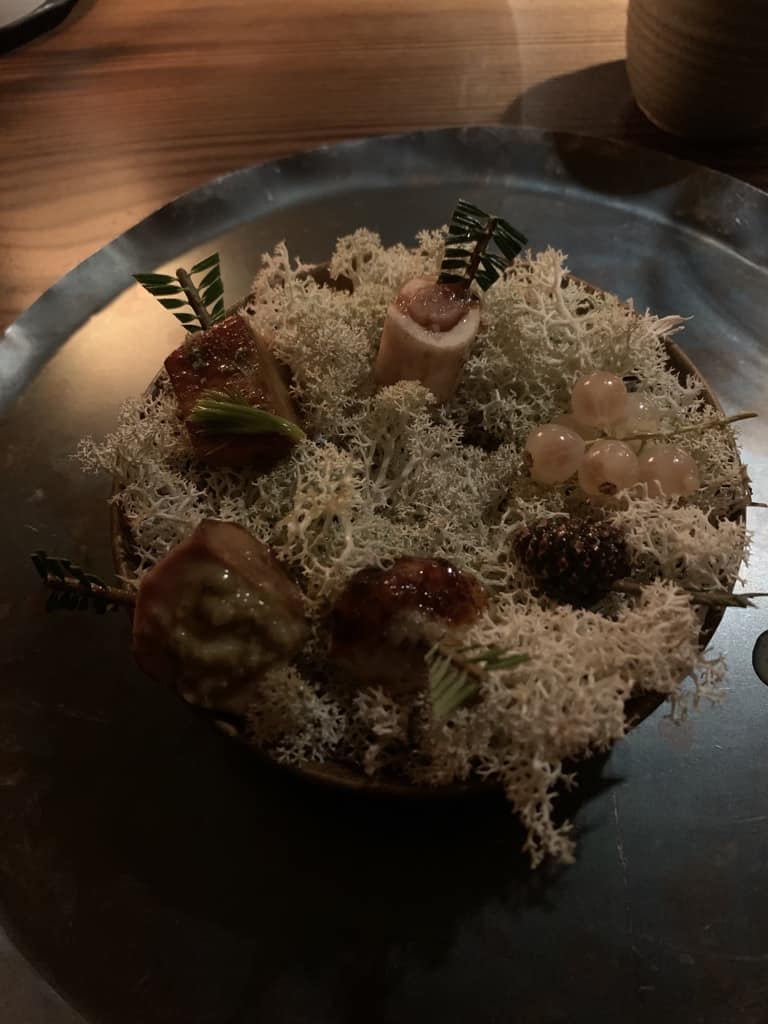
- Blackened Chestnut – which again opens and reveals a chestnut and a soup made from hare broth
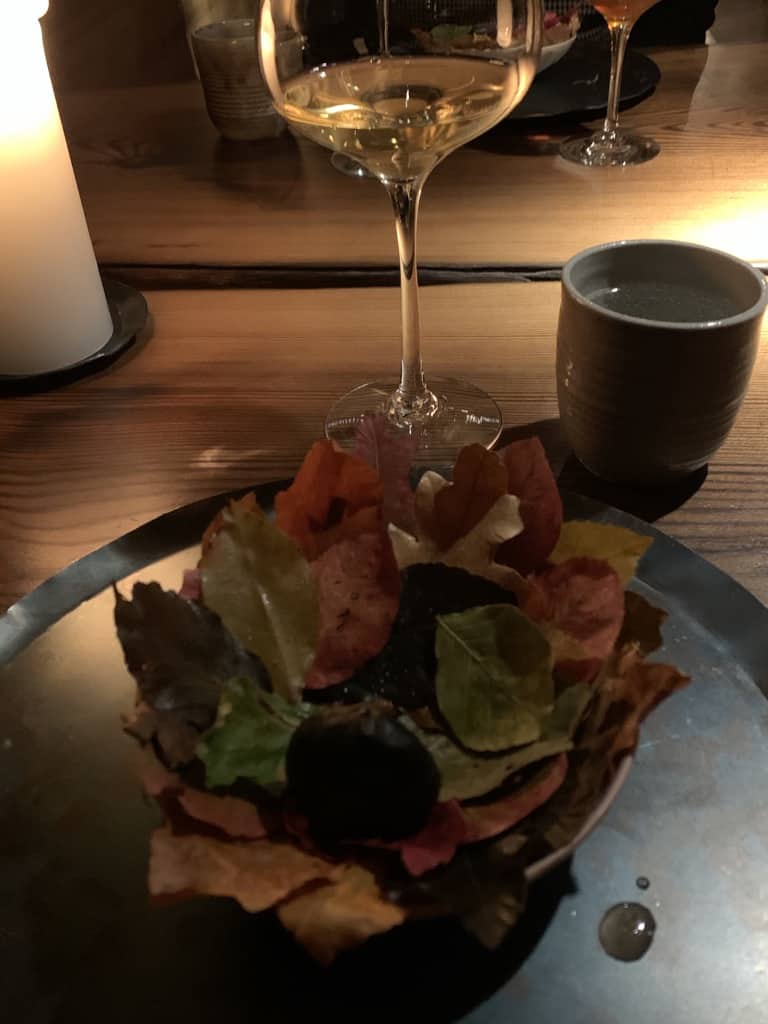
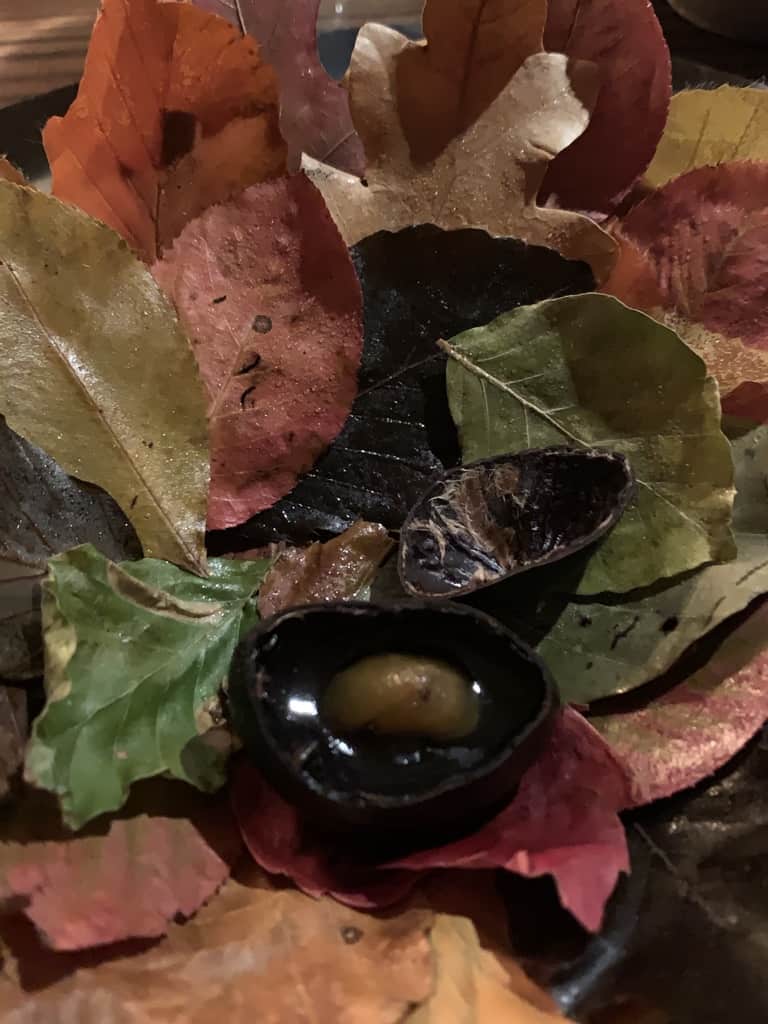
- New Season Hazelnut – shingled hazelnuts (gathered in August and preserved in salt) topped with creme fraiche and topped with caviar
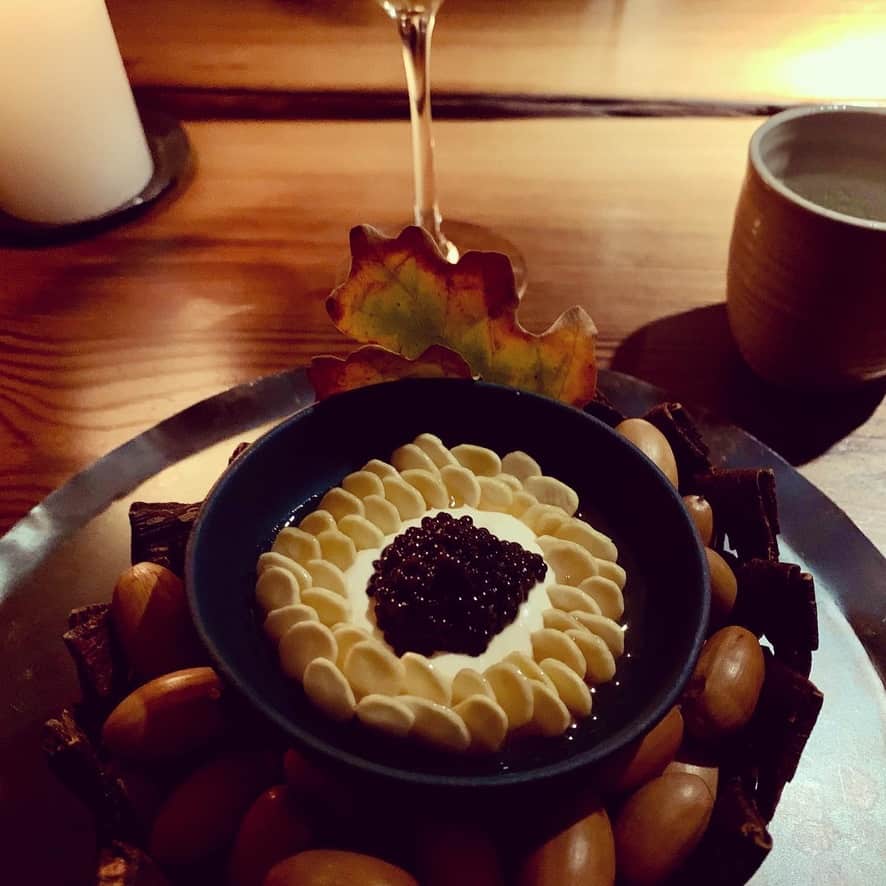
- Chestnut dumplings – eaten in one bite, they reveal a hint of truffles on the inside
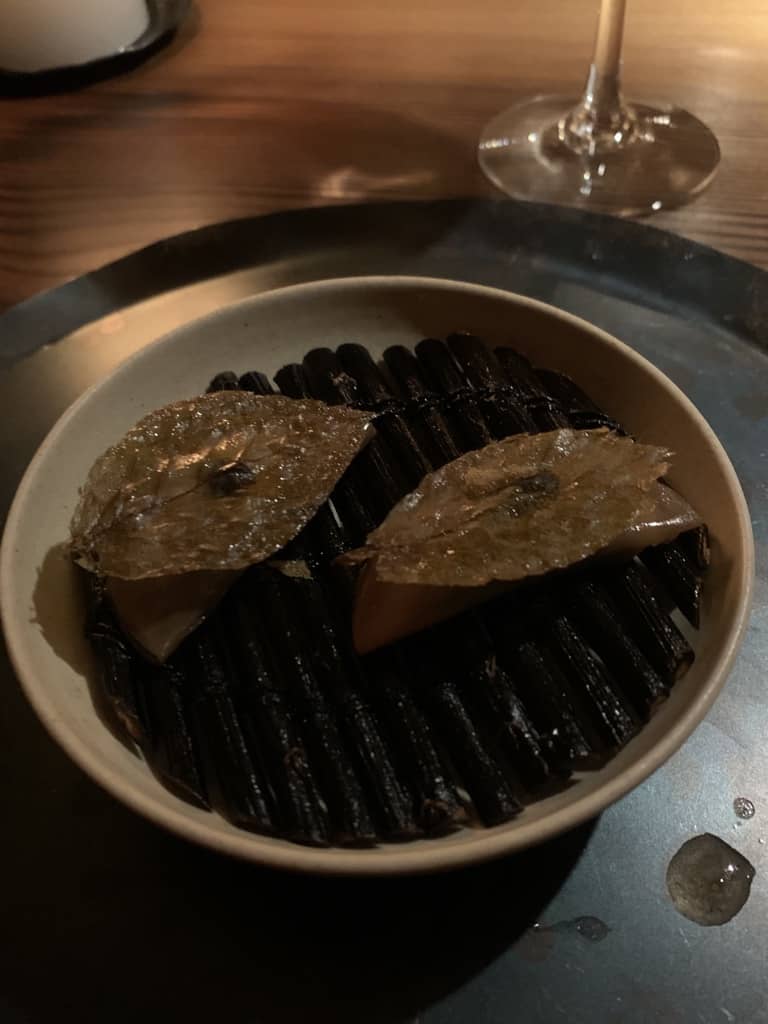
- Pumpkin cooked with plum and hipberries – a mix of tart and sweet
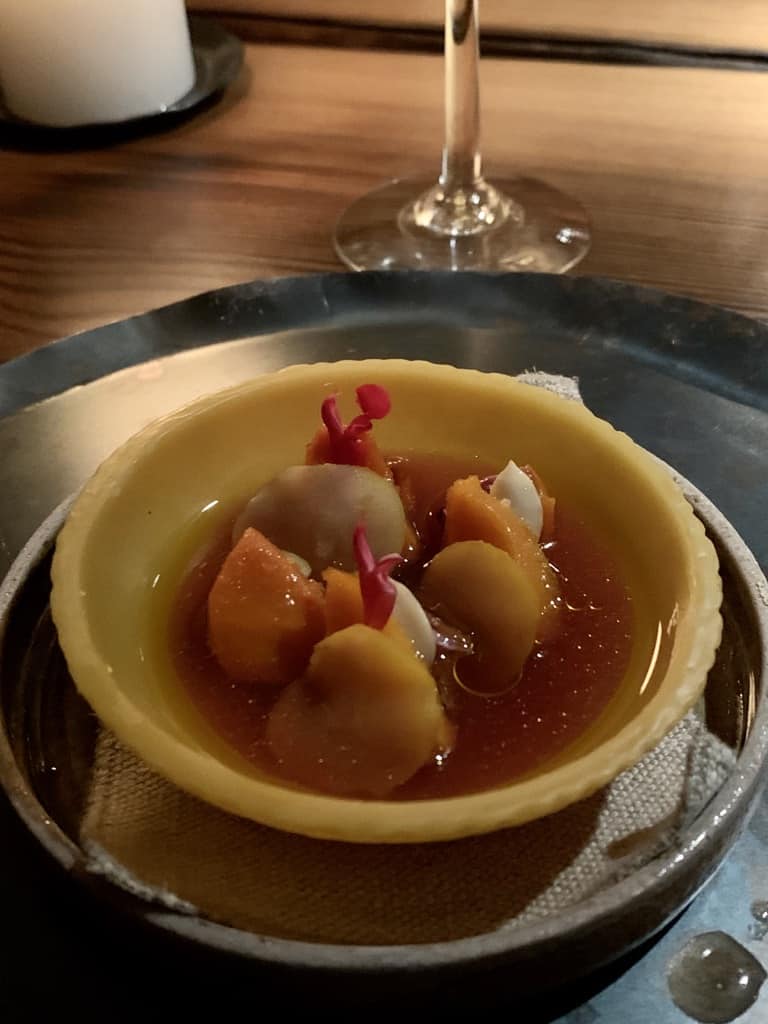
- Deer Brain Stew served with oregano – this was a dish I had to force myself not to think about as I ate it. You eat it like a taco and I have to say, I might have been happier to find out it was brains after I ate it as the taste was quite mild and creamy.
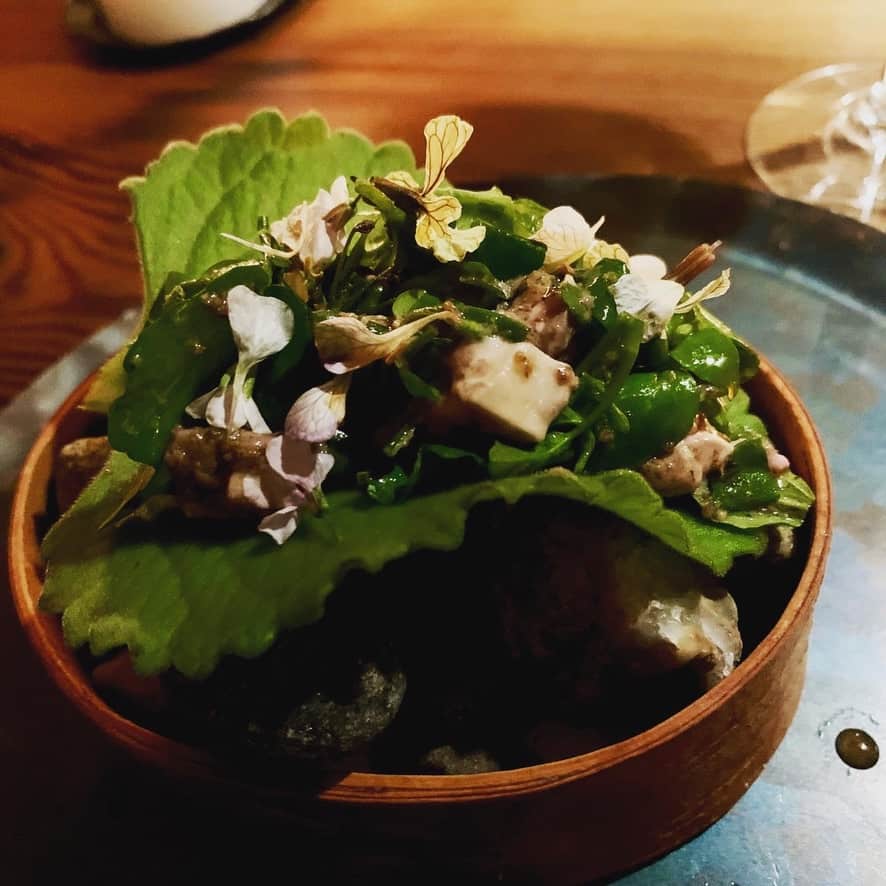
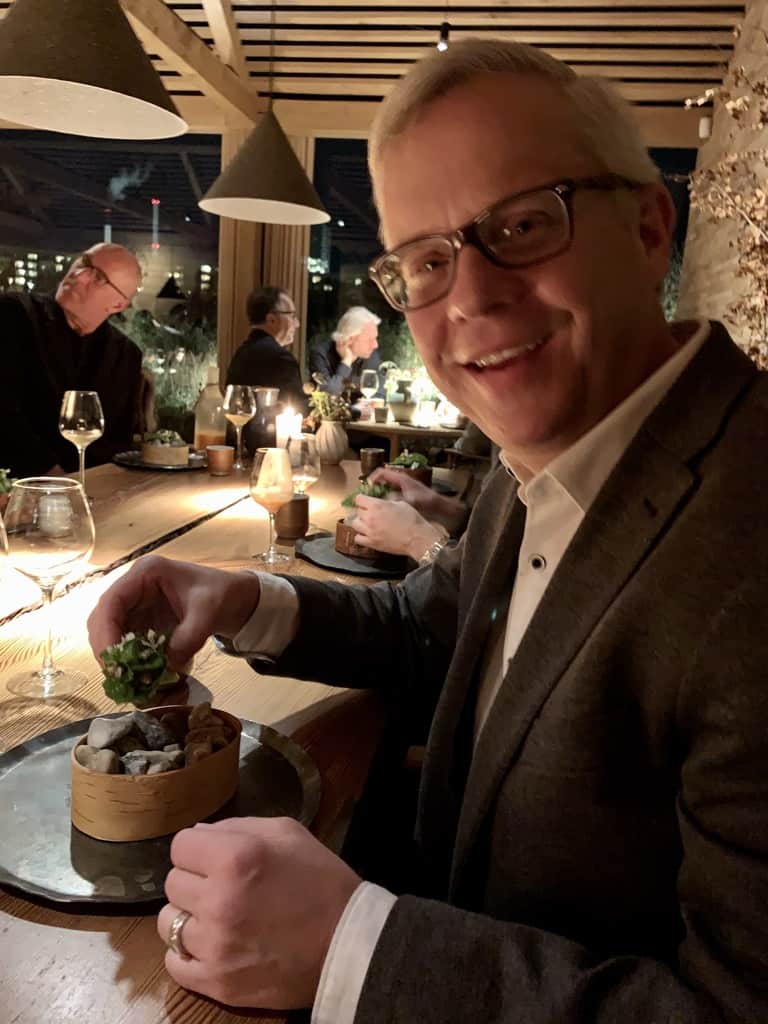
- Dried autumn fruits with rabbit sauce and toffee – this was not a favourite dish of mine, as I felt the flavours fought a bit
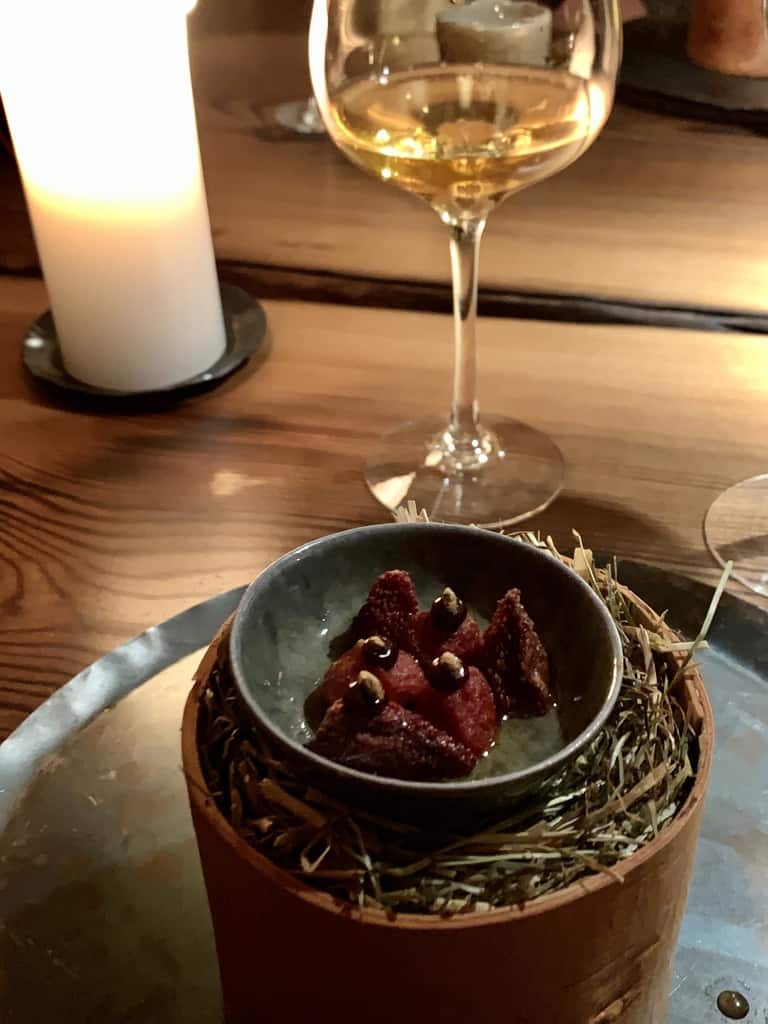
- Nixamalized* potatoes and boar speck – I loved this dish, with its combination of the slightly salty potato and the boar lardo that melted on the tongue. *(I had to look this one up: Nixamalized is “a process for the preparation of maize (corn), or other grain, in which the corn is soaked and cooked in an alkaline solution, usually limewater (but sometimes wood ash lye), washed, and then hulled.”) ELIN’s TIP: if you have to go to the powder room, they will not let you go if they are about to serve this course, as they want to make sure it is eaten while it is still hot.
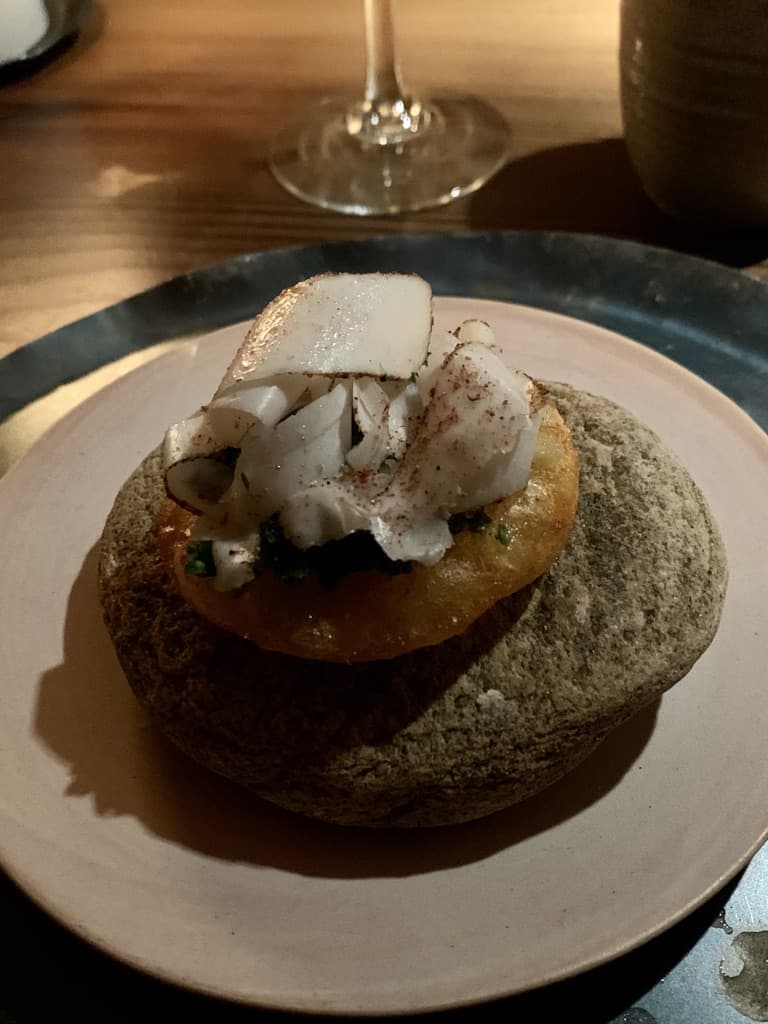
- Duck feast:
- tempura brain and tartare of fresh hearts
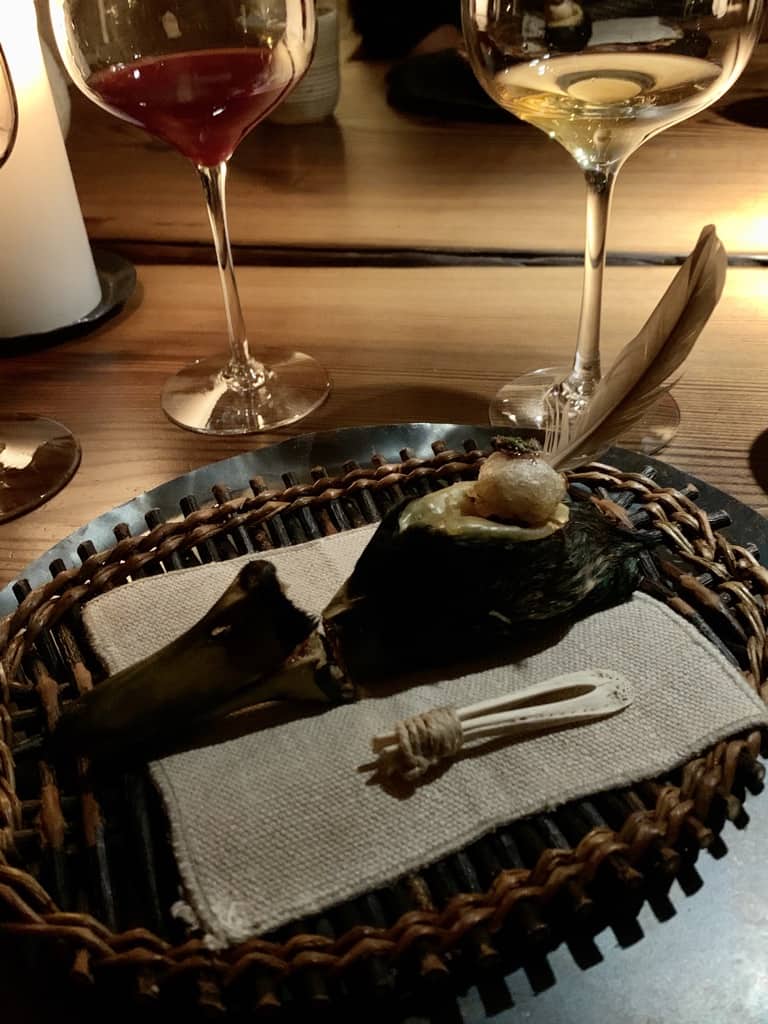
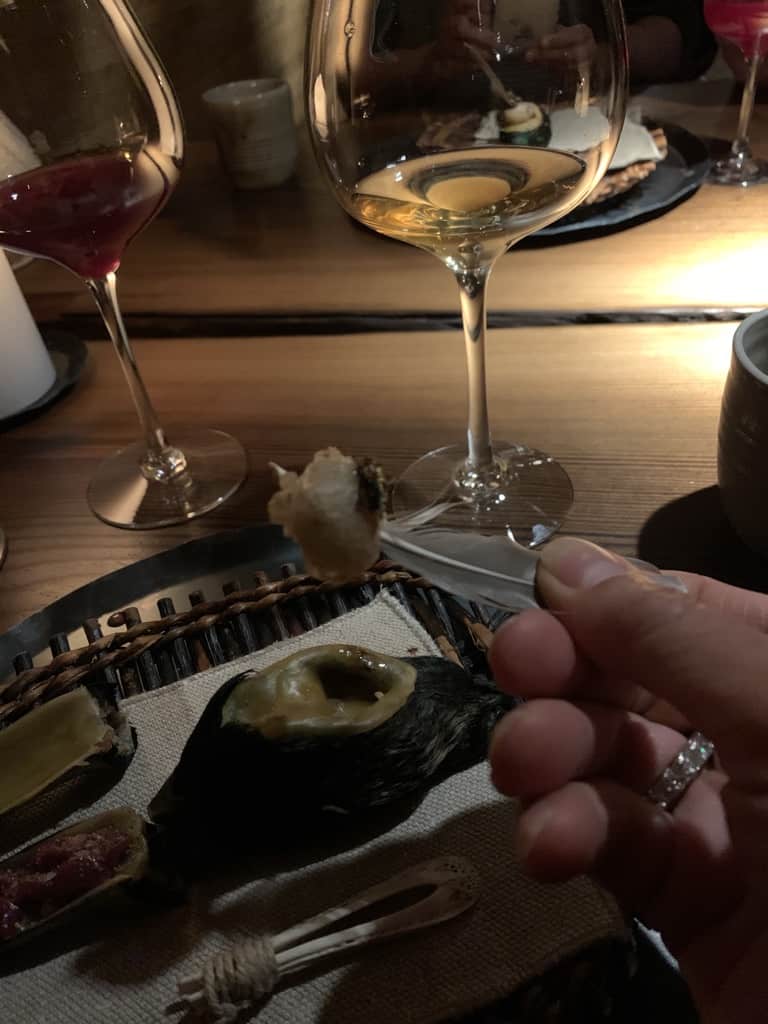
- leg meat cooked on the bone – points for dramatic serving
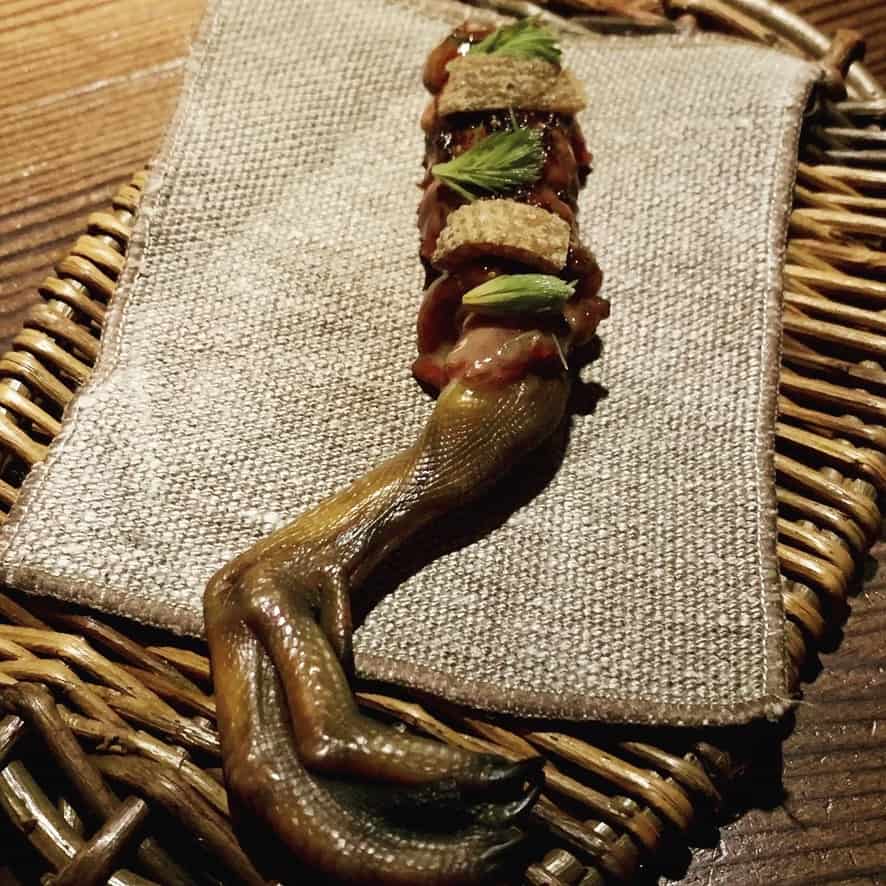
- smoked duck breast meat – this dish came with a warning that since it was wild duck, they may be pellets in it. (No one at our table found a pellet in their duck, which is too bad as I may have started a rumour that if you found a pellet, you got a free meal.)
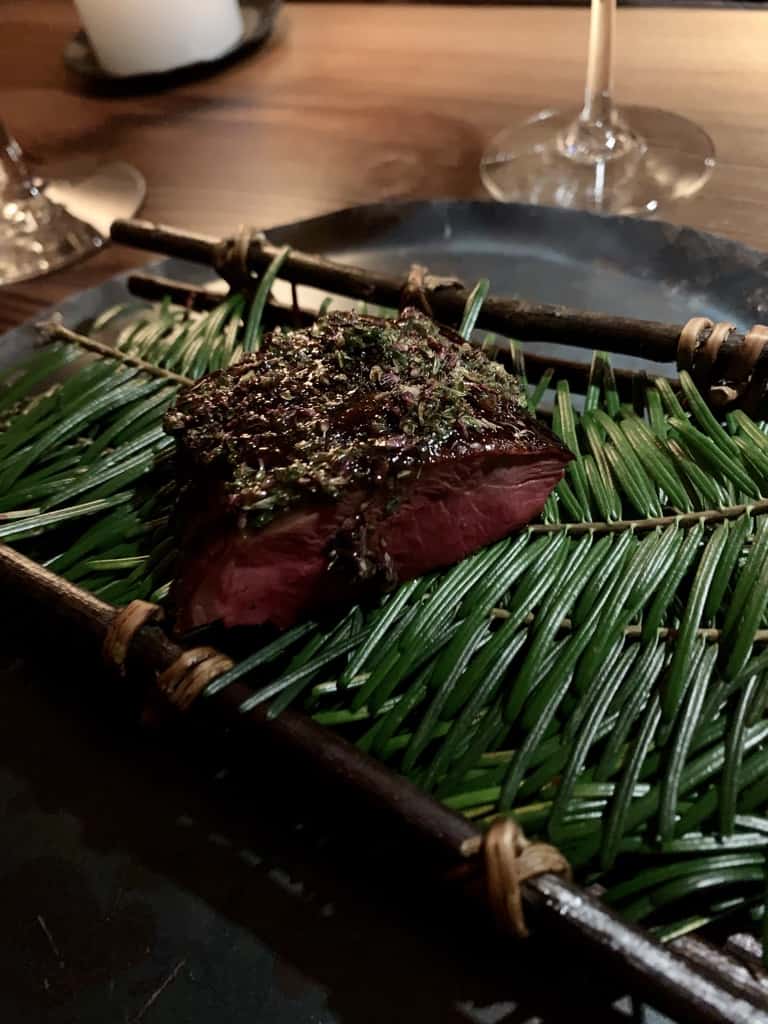
- Pickled Partridge egg
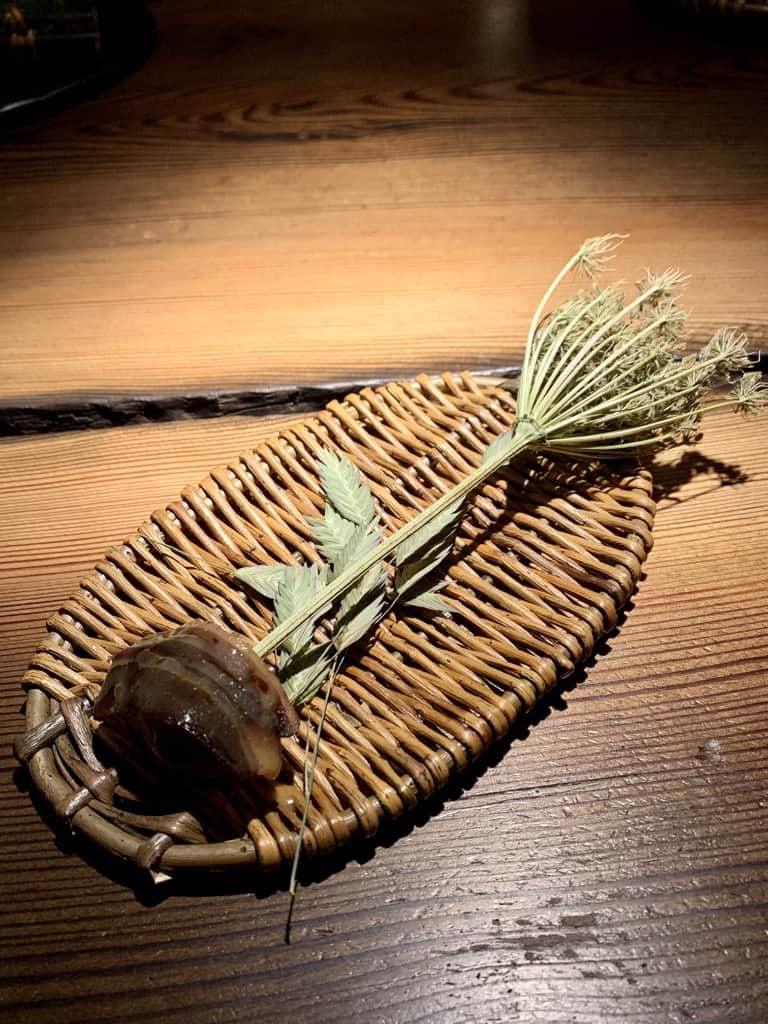
- Ragout of seasonal mushrooms
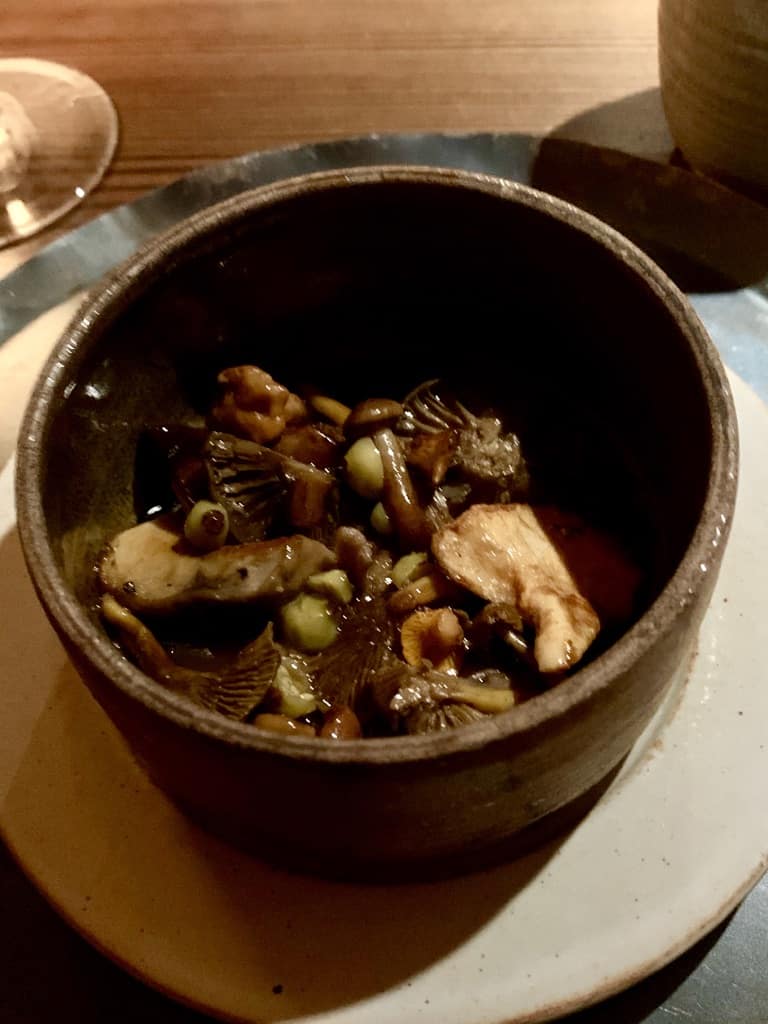
- Poppyseed paste and cardamom mousse – I liked the mousse better without the poppyseed paste – opinions on this dish were divided and our table was pretty much evenly split between those who liked it and those who didn’t enjoy it as much.
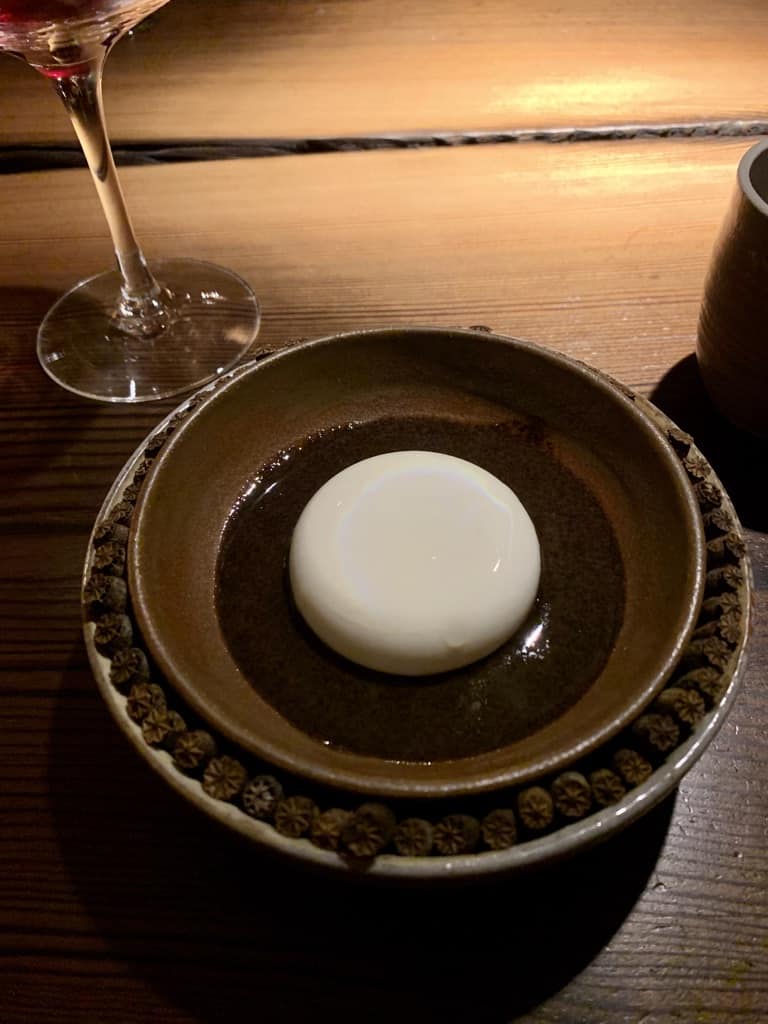
- BBQed waffle with cloudberry cream – we liked them, but we liked the ones at Maaemo in Oslo better (yet another Michelin starred (3!) restaurant helmed by a Danish chef)
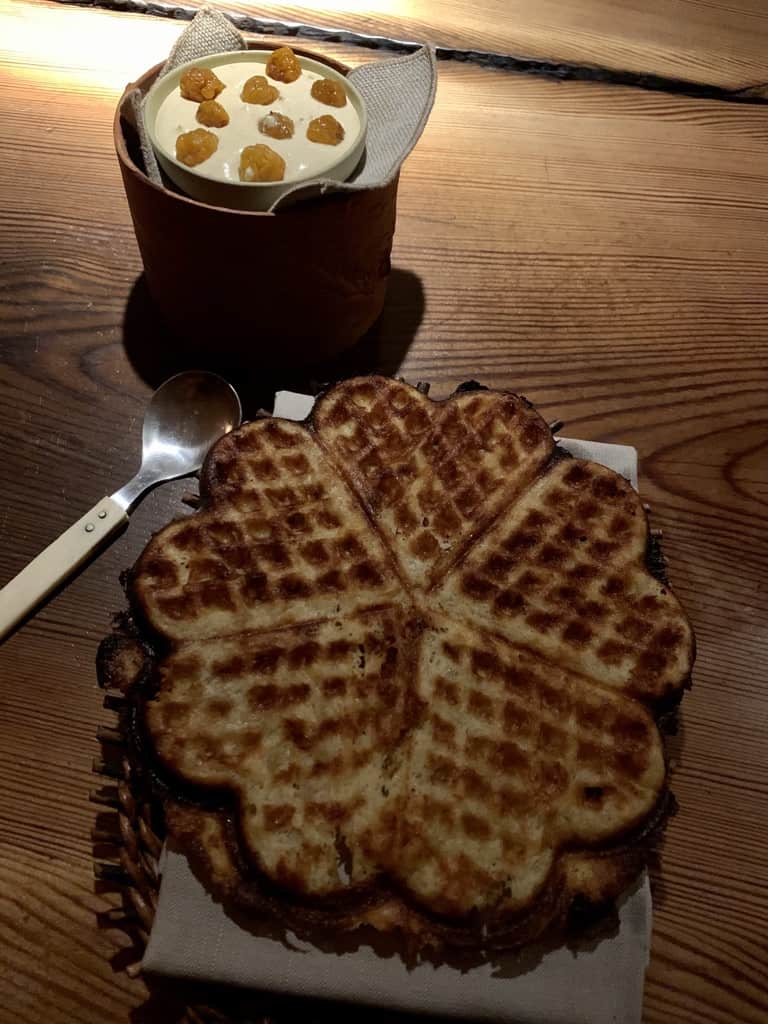
- Pine tree caramel
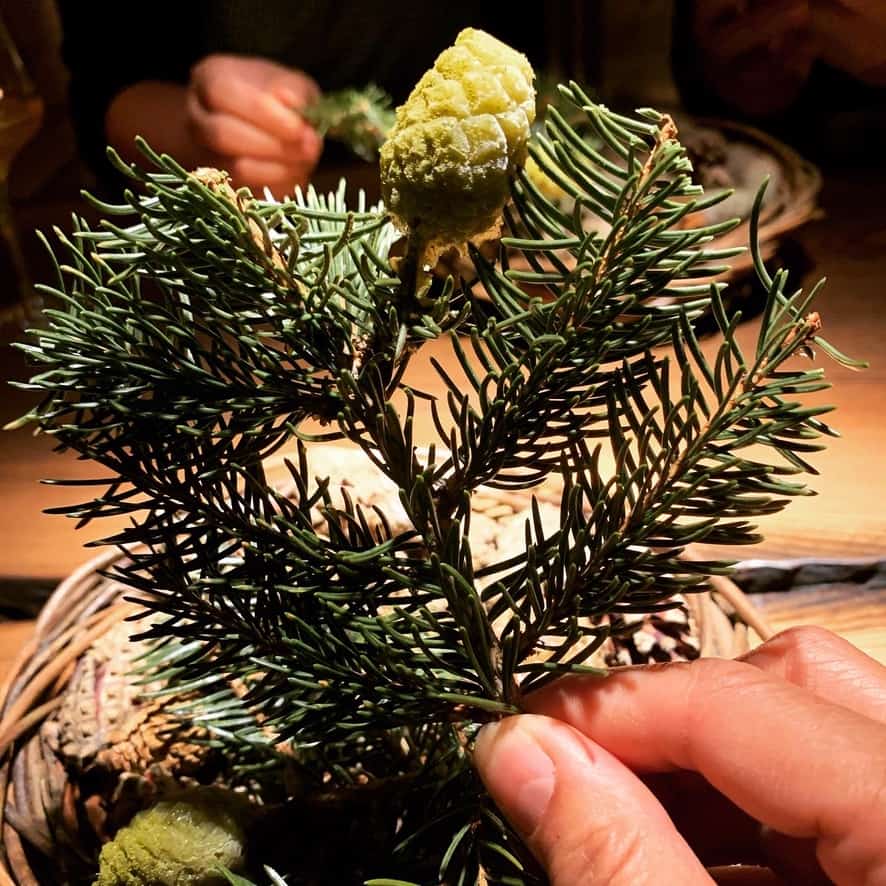
When the dinner is over, restaurant staff cleverly take you on a tour of the restaurant to get you on your feet so that they can prepare the table for the next seating.
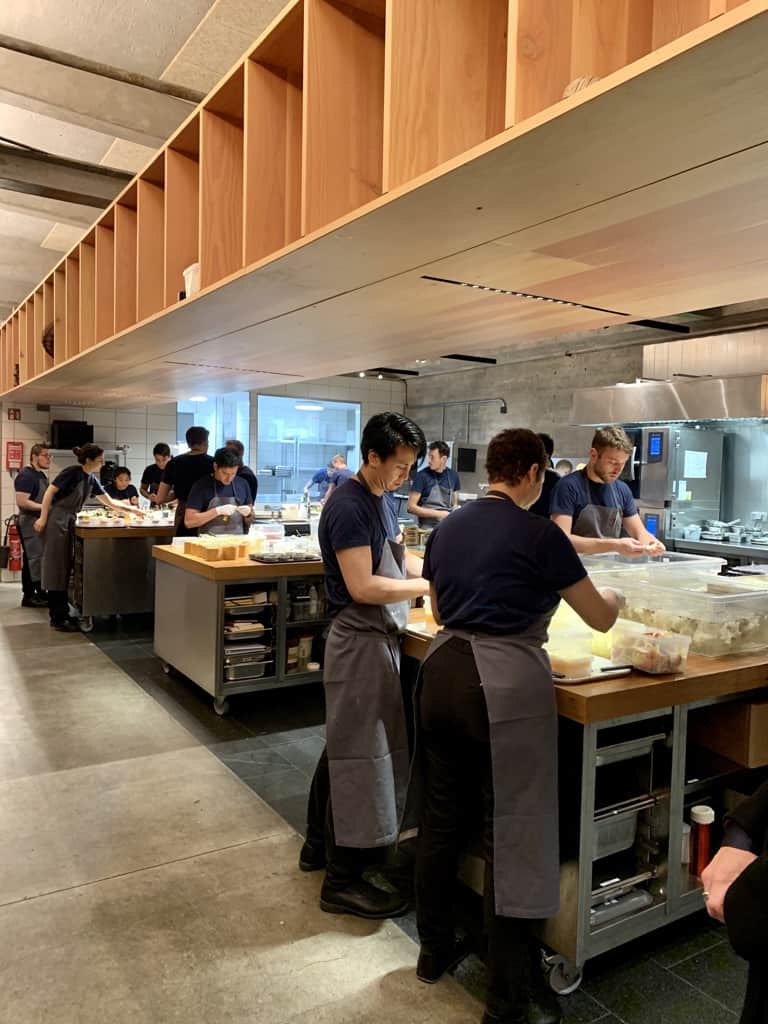
The ancient tree stump, that is still a living thing, at the entrance.
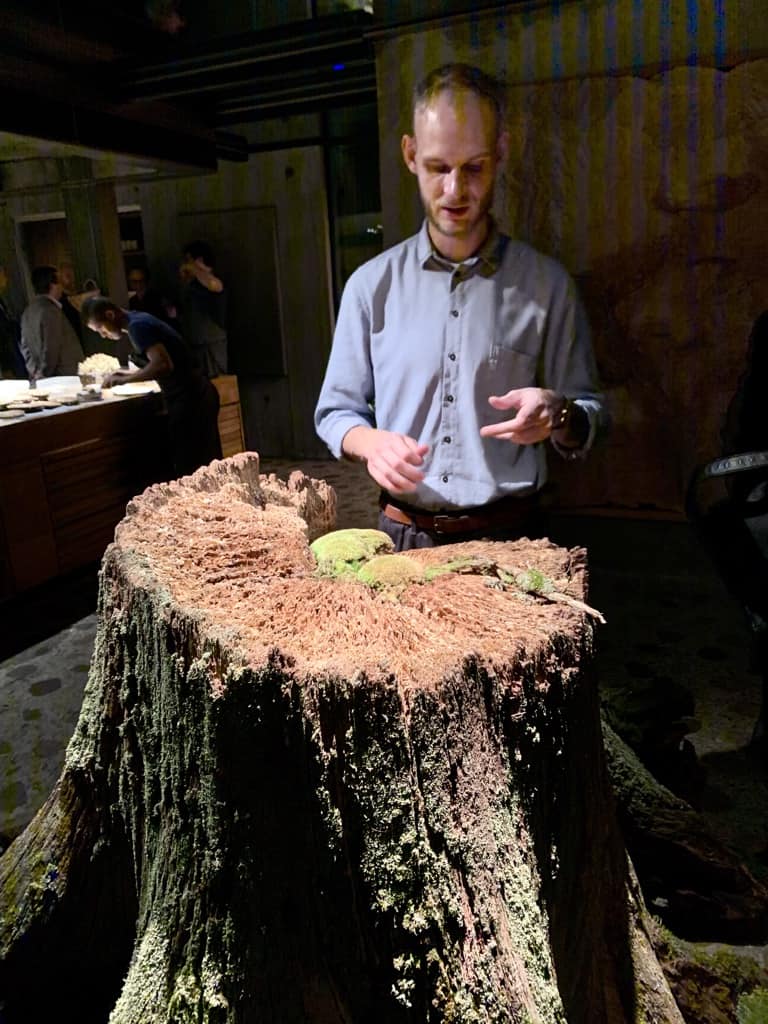
The fermentation lab in action. The Noma Guide to Fermentation was published in 2018 and was named one of the best cookbooks of the year.
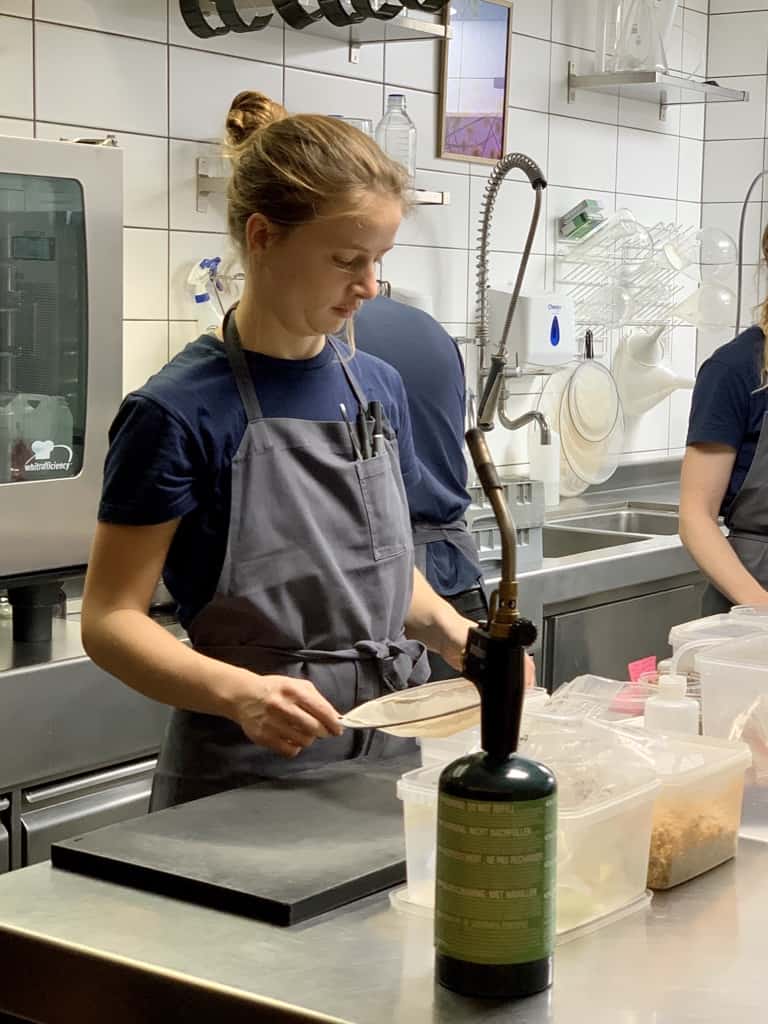
Dish storage – as you can imagine, there are a lot of dishes! To make things easier, and make sure that everything is in the correct place, photos of the serving pieces are taped to the appropriate cupboard.
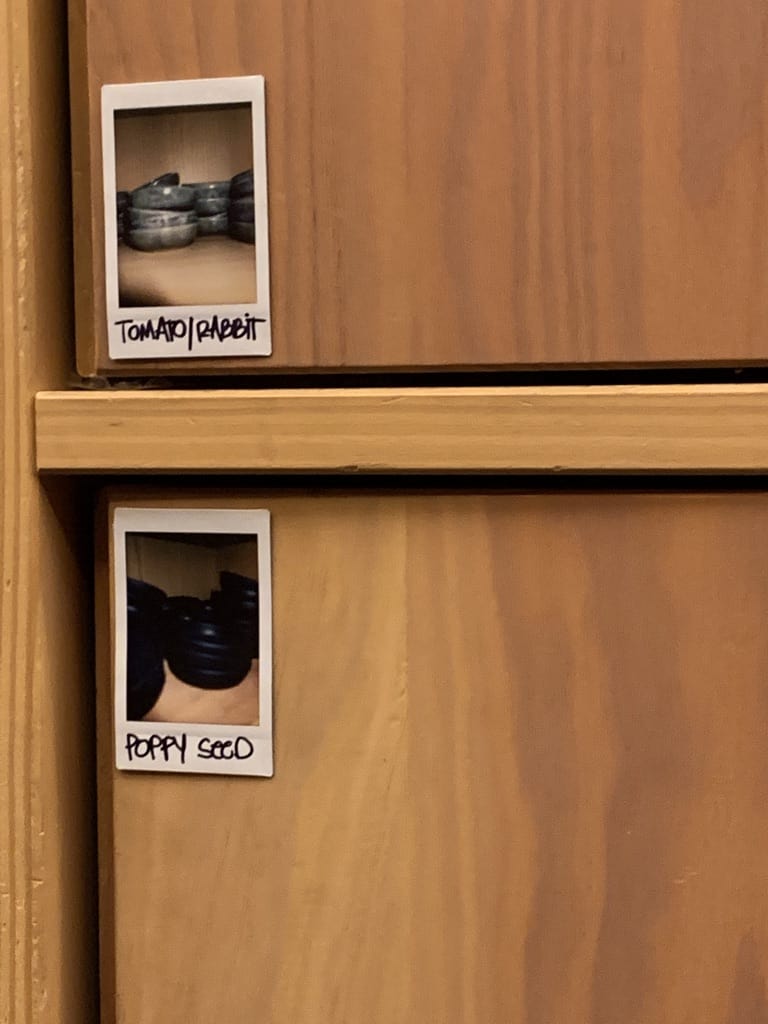
Some of the restaurant’s numerous awards, including the World’s 50 Best Restaurant awards.
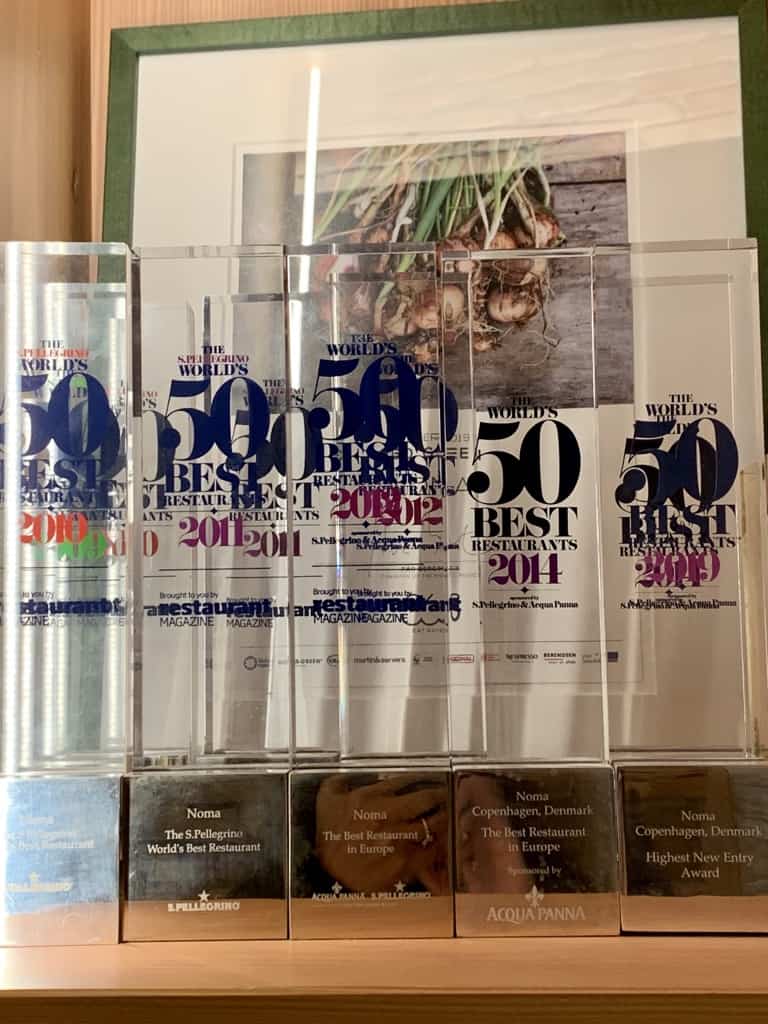
Planning a trip to Copenhagen? Sign up for the NOMA mailing list, here. They will keep you posted on the dates when the tables for each season will be released. If you don’t get in, sign up for the waiting list. There are 42 seats available per seating. The reservation policy is here. NOTE: you must confirm your reservation by paying for the meal in full (drinks – wine or juice – pairings will be paid for the evening of your meal), and yes, it is an ouch. Refunds are given for cancellations 5 days before (for groups of 2) and 10 days before for groups of 4, 6 or 8.
Skål!
If you go:
NOMA: Refshalevej 96 1432 Copenhagen K; Phone: +45 3296 3297 (The phone line is open between Monday – Friday, 11:00 – 16:00)
E-mail: noma@noma.dk (Please note that they do not take reservations through this e-mail address); Opening Hours: Tuesday – Friday, 17:00 – 00:00, Saturday 11.30 – 19.00





















